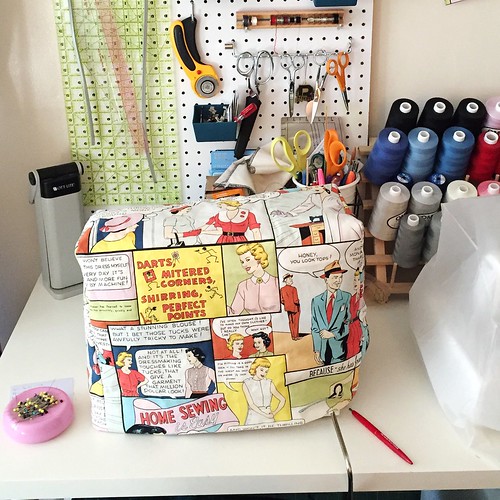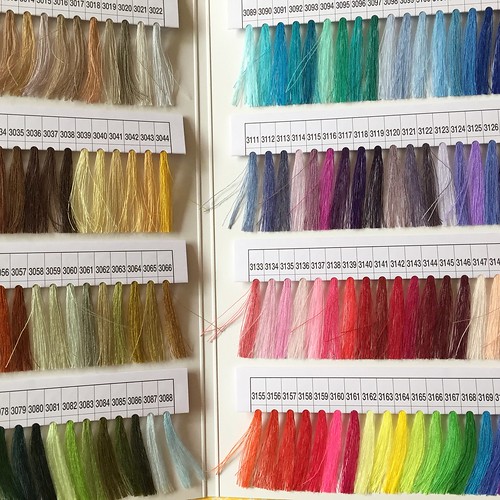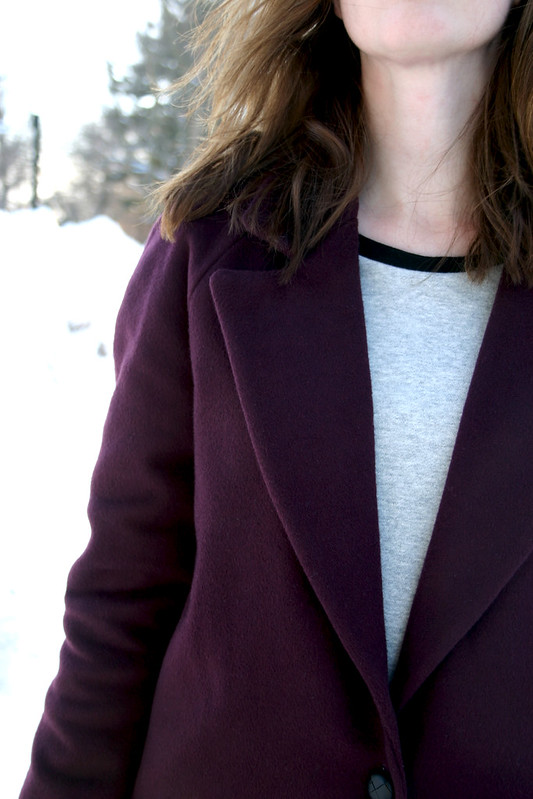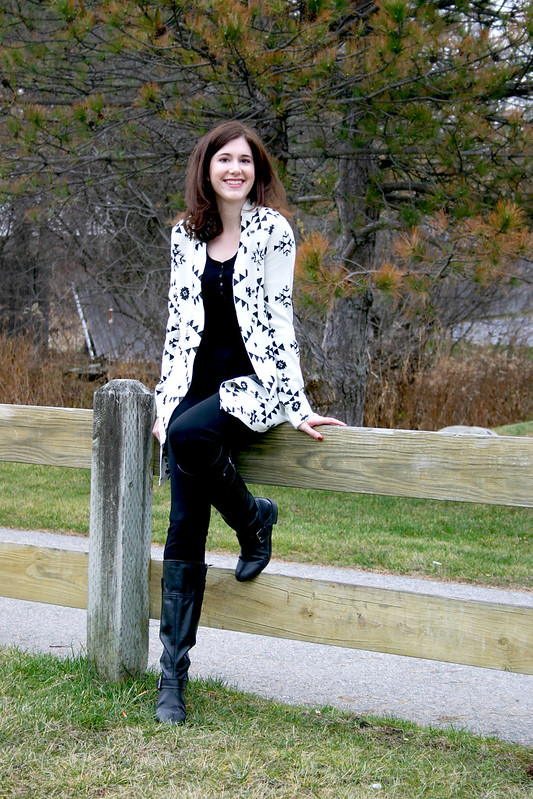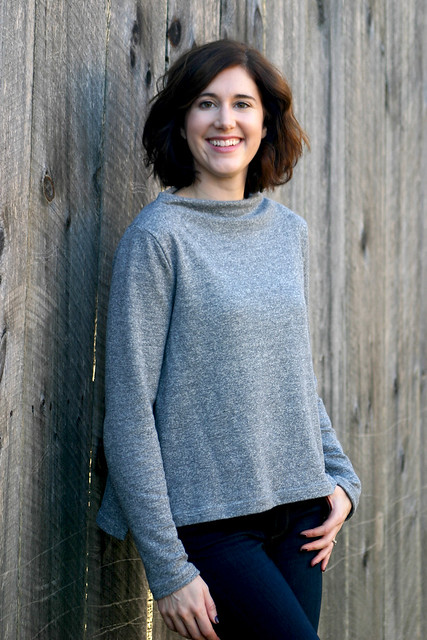
Pattern: Toaster Sweater #2 by Sew House Seven
Fabric: french terry knit from Indiesew (sorry, sold out)
So yeah…this whole “slow sewing” movement is my jam because that’s all I seem to do these days when it comes to sewing. Sewing time is now few and far between – I started grad school this fall and work kicked into high gear two months ago. I thought after the wedding I’d have the time to get back into the swing of things with sewing, but I guess not!
(Oh, and I got a hair cut and chopped off 6″ since my last post – I swear my hair is not that poofy IRL)
Since my time is so limited now, I need to really focus on garments that I will absolutely enjoy making (and wearing) or will challenge my sewing skills – no more time to waste on garments that I don’t have 100% of my heart into.
Toaster Sweater #2 was a perfect jump-start to get back into garment sewing this fall.
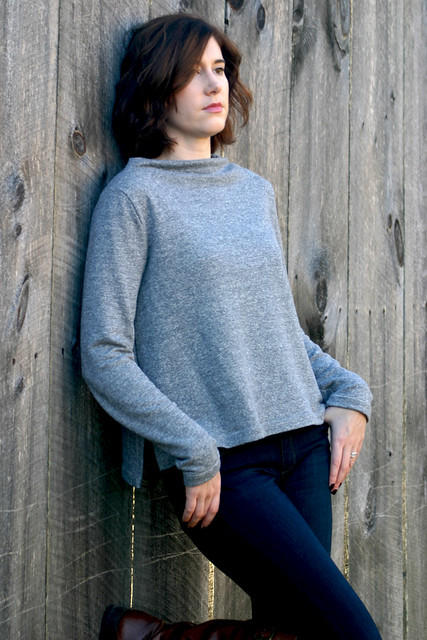
When all was said and done, I made this sweater in an afternoon. I have a weakness for funnel necks/turtlenecks and jumped on this pattern as soon as I saw it as part of the Indiesew Fall Collection (now I need to check out Toaster Sweater #1!). The fabric is such a soft, yummy french terry and I just want to wrap myself up in a giant french terry burrito with this fabric. If you’re thinking about making this pattern, make sure to pick a fabric that has some body to it for the neck to sit correctly, anything jersey-like will result in a flimsy neck and the neck facing may flop open.
I loved the construction of the funnel neck – it’s a brilliant way of drafting the facing into the neckline and constructing the curved shoulder seam in the beginning of making the sweater. Hard to explain, but pretty cool when you make it.
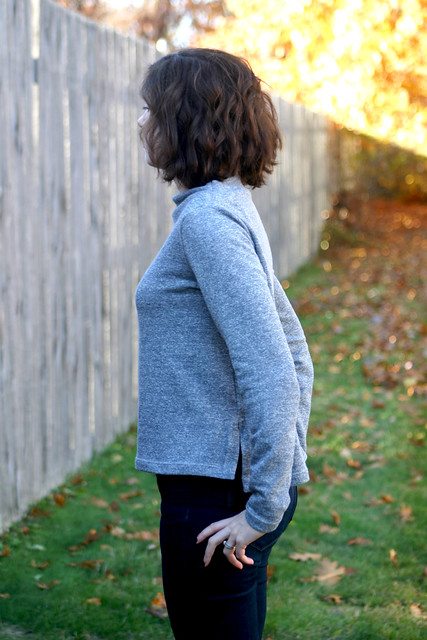
I’m gravitating towards loose-fitting tops and dresses these days and I love the a-line fit of this sweater – see how roomy it is? The only thing I would change next time is to lengthen the top – I love the split hem and the hi/lo design, but I feel like it’s a smidge too short in the front for my liking. I’m also wearing a tank top underneath because the splits go pretty high on the side and I would be flashing some skin without an underlayer.

The mitered corner instructions were great, too, and made it easy to hem everything in place with professional-looking results. I used my twin needle for both the sleeve hems and bottom hem, pivoting around the slit opening.
Did you know there’s a Toaster Sweater #1 as well? I’m itching to try my hand at that one since I love #2 so much – I wore it twice already in the last week!
